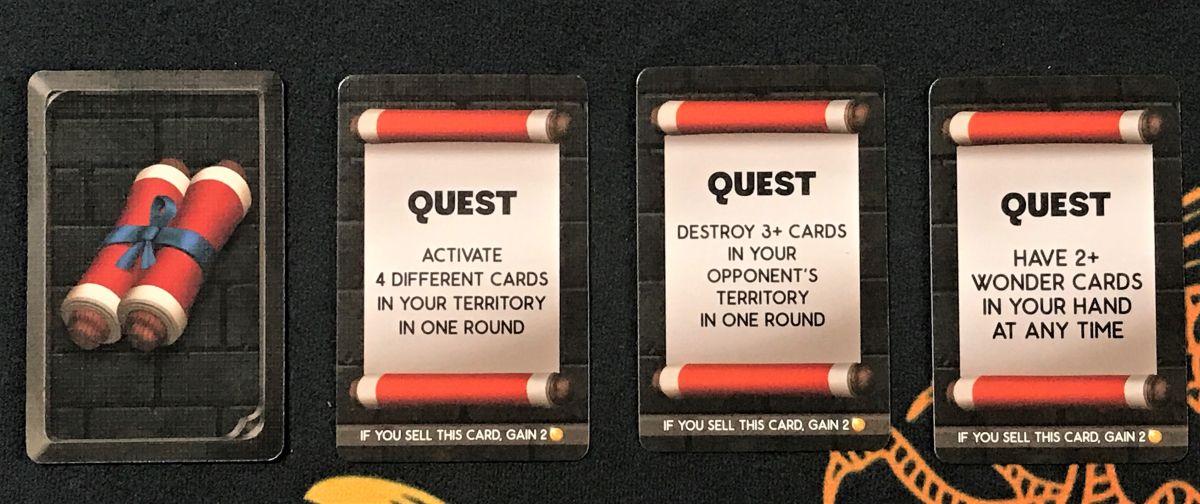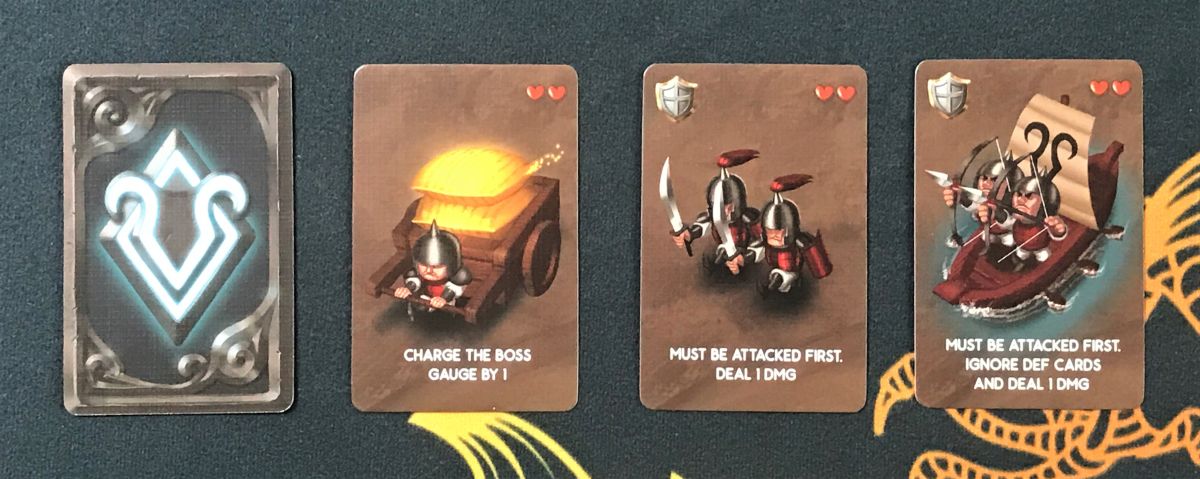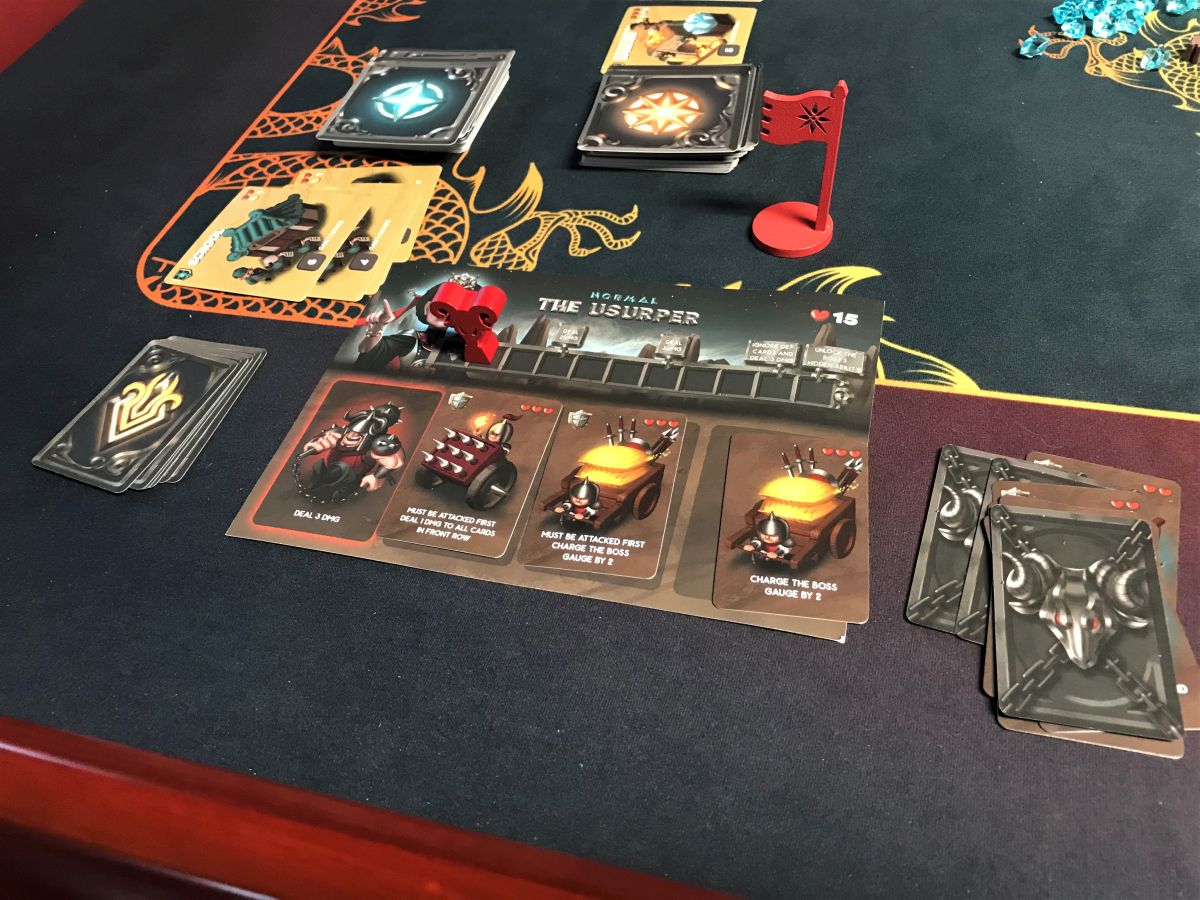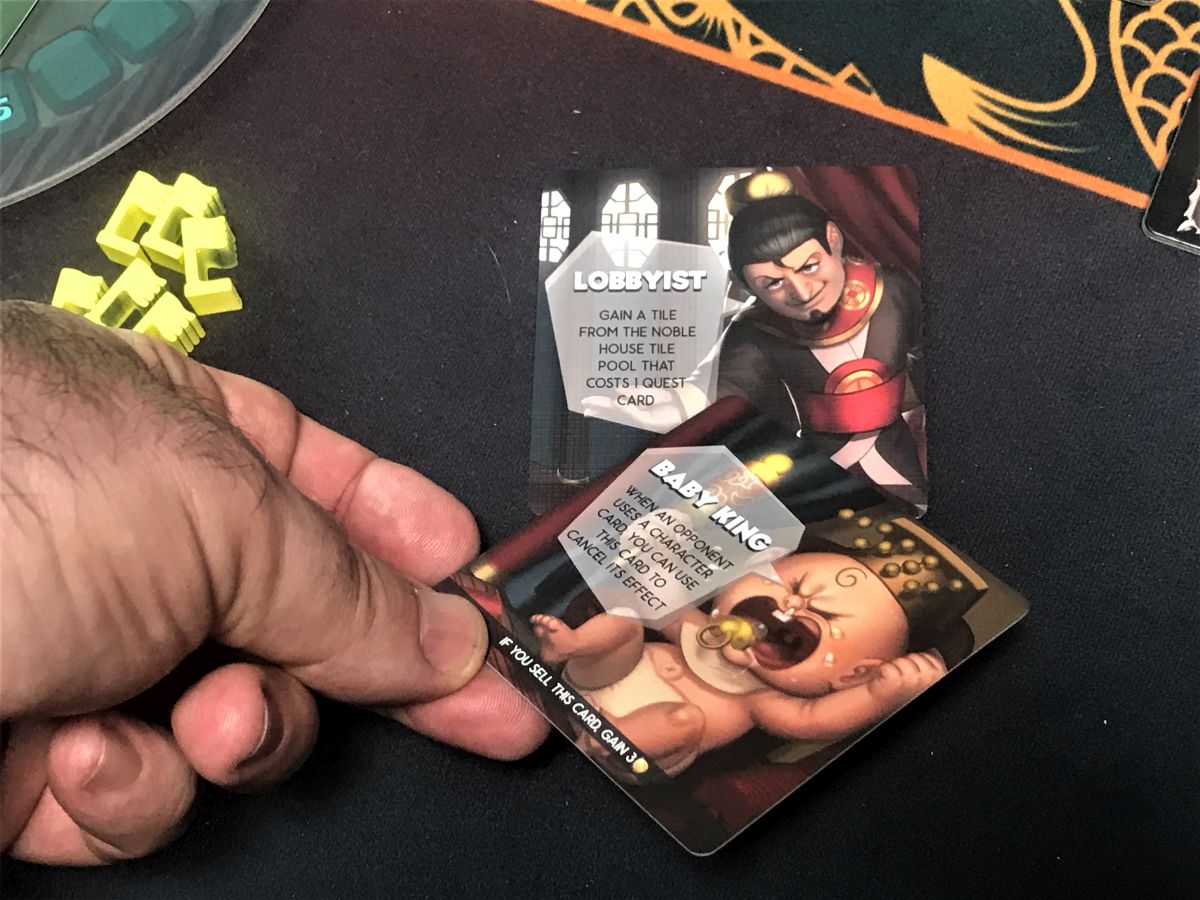Last summer, GeekDad reviewed the dynamic dice-placement, territory-building Shaolia: Warring States. A year later, Bad Comet Games is back with not only a reprint of the base game, but the game’s first expansion, Shaolia: Great Houses. I received a prototype of the expansion to take a look at what changes it brought to the continent of Shaolia.
What Is Shaolia: Great Houses?
Shaolia: Great Houses is an expansion to Shaolia: Warring States which brings not only new cards, but also new mechanics and game modes to give the players more options in pursuing their paths to victory. It is for 1–4 players, ages 14+, and takes 30–60 minutes to play. A base pledge for the expansion and stretch goals starts at $25. If you haven’t yet played Shaolia, you can purchase a bundle with both Shaolia: Warring States and Shaolia: Great Houses for $80. And for $88 you get the base game, expansion, and a premium deluxe box large enough to hold the base game and expansion, along with plastic organizers. There’s an estimated ship date of June 2021, and the expansion is currently seeking funding on Kickstarter.
New to Kickstarter? Check out our crowdfunding primer>.

Shaolia: Great Houses Components
I was sent a prototype version of the expansion, so there may be differences between this and the final version. Here’s what comes in the expansion:
- 11 Noble House Tiles
- 20 Quest Cards
- 24 Quest Trackers
- 12 Level 1 cards
- 72 Level 2 cards
- 9 Character cards
- Boss Gauge Tracker
- Boss Board
- 4 Level 1 Minion cards
- 3 Boss Lock cards
- 11 Level 2 Minion cards
- 20 Balance Patch Cards
Most of the components are of the same high quality as that in Shaolia: Warring States. Much like the base game, unique wooden meeples are used as markers in the game.

The expansion introduces the titular Great Houses, which are made of the same thick board as the Territory and Trade boards in the base game.

There is also a solo mode new to Shaolia which introduces a Boss for the player to battle. The double-sided Boss Board in my prototype copy was printed on thick paper, but I anticipate that the final product will use the same board as used for the player boards.

How to Play Shaolia: Great Houses
For rules on how to play the original Shaolia: Warring States, as well as a print & play version, you can go here. I also recommend taking a look at Erik Stanfill’s review of the base game for GeekDad.
The Goal
The goal of Shaolia is to defeat your opponent either by dealing 12 damage to their palace, or by achieving a culture score of 18. Great Houses will also add a third victory condition which can be achieved by fulfilling quests.
Setup
Start by choosing which game mode you will be playing. The expansion rulebook will show you which Level 1 & 2 cards and trade tiles you will use for that mode. As there are new Level 2 cards in Great Houses, the rulebook for the expansion also gives you recommended cards sets for the game modes from Warring States.

Setup follows that of Shaolia: Warring States, with the following additions:
Shuffle the Noble House tiles and create a face down stack. Draw 4 of the tiles and place them face up next to the stack.
Shuffle the Quest cards and place the deck face down. Draw five of the cards and place them face up next to the deck.

Each player chooses a color of quest tracker and places their 6 trackers near their Territory board. You are now ready to begin! Here’s what the setup for a game using “The Sellswords” 2-player game mode looks like:

Gameplay
A game of Great Houses proceeds much the same as one of Warring States, but with the addition of the Noble House tiles and Quest cards. These two new components work in tandem.

Noble House Tiles
These tiles can be purchased during the purchase phase of the game. The currency to purchase them are Quest cards that players have earned in the game. After a Noble House tile has been purchased, it is immediately replaced by another from the deck.
Noble House tiles are placed near the player’s territory board, and function the same as Level 1 & 2 cards, with one important exception: They cannot be attacked, blocked, or destroyed, so a player will benefit from their abilities until the end of the game.

Quest Cards
If a player completes the requirement listed on a Quest card during their turn, they get to take the quest card into their hands. Another Quest card from the deck is immediately drawn to replace the one taken.
As mentioned previously, Quest cards can be used to purchase Noble House tiles. Alternately, you may sell one a Quest card for 2 gold.
There are two types of Quest cards: ones that are immediately achieved by meeting their requirements, and ones with 2–3 open slots that require players to repeat the action listed on the card that many times before they complete the quest. Cards with these repeating quests can only be completed by whoever does the action first, claiming it with one of their quest trackers.
Game End
A game of Shaolia: Great Houses ends the same turn that someone either gains 18 culture, or does 12 damage to their opponent’s palace. Additionally, there will be that previously-mentioned third victory path achieved through completing quests.
The Usurper – Solo Mode
Shaolia: Great Houses includes a solo game mode, which operates a little differently than the other game modes in Shaolia. In this mode, a player will be facing off against an AI-driven Boss, the Usurper. In order to win, a player must either deal 15 damage to the Boss, or gain a culture score of 18.
The player will set up much the same as for a base game of Shaolia: Warring States, as you will not be using any Noble House tiles or Quest cards. However, the Boss Board will take the place of the opponent’s Territory board.
Solo Mode Setup
Choose whether to play normal or hard difficulty, and place the Boss Board on its appropriate side.
Players will make their own deck of Level 2 cards, choosing 9 different types for 36 cards total, as well as any two Trading post tiles to place on the Trading board.
The Level 2 Minion cards are shuffled and placed face down next to the Boss Board. Shuffle the Level 1 Minion cards and place them face down on top of the Level 2 cards, forming the Minion deck.

Draw the top card from the Minion deck and place it in the leftmost Minion card slot on the Boss Board. Cover the rest of the Minion slots and the Boss Hidden Ability slot with Boss lock cards.
Place the Boss gauge tracker at the starting point of the tracker.

Solo Mode Gameplay
Gameplay follows that of a normal Shaolia 2-player game, with the following changes:
Purchase Phase
At the beginning of the Boss’s purchase phase, a card is drawn from the Minion deck and placed in the leftmost Minion card slot. All the existing Minion or Boss Lock cards are pushed into the slots to the right. If a card is pushed off the board, it is discarded.
Building Phase
The Boss does nothing.
Action Phase
All of the Boss abilities visible on the Boss Board activate, starting from the far left and proceeding in order:
- Attack abilities will target defense cards first, then Level 2 cards, and finally the Player’s palace.
- Charge cards will move the Boss Gauge Tracker the designated number of spaces. Boss gauge abilities activate as the tracker reaches the spot.
The Boss Gauge Tracker resets after it reaches the end of the track.

Shaolia: Great Houses – The Verdict
The original Shaolia: Warring States has great table presence. From the wonderful artwork to the dynamic meeples, it is a joy to look at and play. It is a bit of a table hog, though, and with the additional pieces in the expansion, Shaolia: Great Houses is going to take up just a bit more space. Here’s a look at a game in progress on my Origins Game Table, which has a 5’x3′ play surface:

Bad Comet Games made a lot of great choices in this expansion. Besides the obvious way that the Noble House tiles and Quest cards work together, there’s a lot of synergy to be found in the new Level 2 and Character cards that come with Shaolia: Great Houses. In one of my games, I had drawn the “Lobbyist” character card during setup, which would allow me to grab a Noble House tile without even having to complete any quests! Early in the game, I played it and as I was reaching for the Noble House tile I was going to claim… my opponent produced his “Baby King” card, denying me my prize.

I love all the additional Level 2 cards, though so much content can be a bit overwhelming. Thankfully, each game mode either instructs you on which exact cards to use in each mode, or at least gives you recommendations. And with so many game modes, there will be tons of new strategies to try out. I’m excited at the prospect of a third victory condition as well; unfortunately, that was not included in the prototype I was sent.
If there’s one area in the expansion that needed a bit of work, it was the solo mode. While the AI mechanics are easy enough to employ, I found the difficulty level to be quite high, even on the “normal” Boss setting. Part of that may have been the result of bad luck on my card draws, but I still feel that “The Usurper” could use a bit more tweaking before the expansion ships next year.
If you’re a fan of Shaolia: Warring States, you’re probably going to want to pick up this expansion. It provides some great new mechanics with the Quest cards and Noble House tiles, and plenty of new cards and game modes to provide you with seemingly endless variety. And if you’ve never played Shaolia: Warring States, then this is also a great opportunity to pick up both the deluxe version of the base game and the Great Houses expansion. To learn more or to make a pledge, go to the Shaolia: Great Houses page on Kickstarter.
![]() To subscribe to GeekDad’s tabletop gaming coverage, please copy this link and add it to your RSS reader.
To subscribe to GeekDad’s tabletop gaming coverage, please copy this link and add it to your RSS reader.
Disclosure: This post was sponsored by Bad Comet Games.




